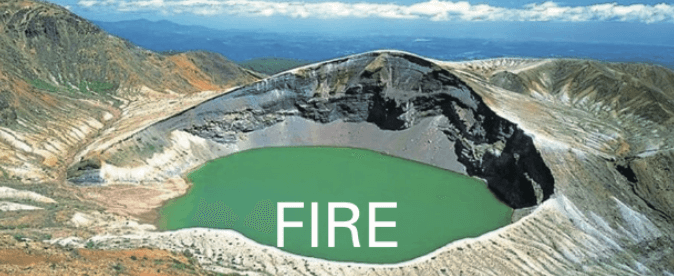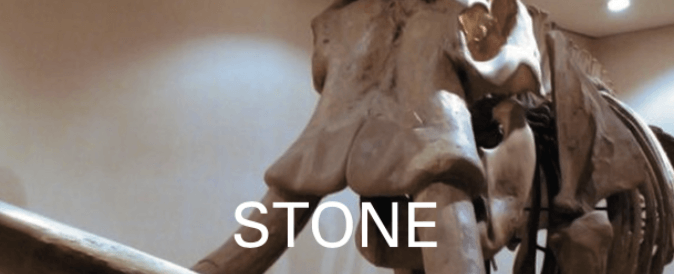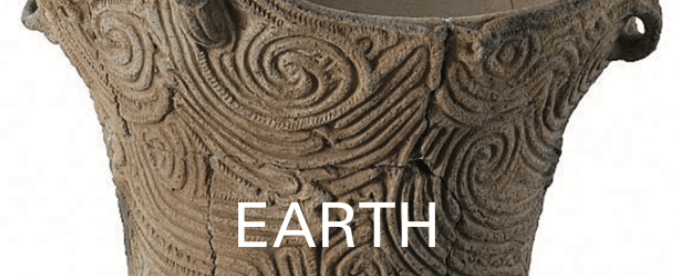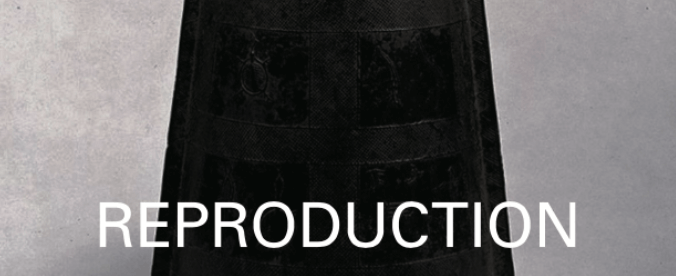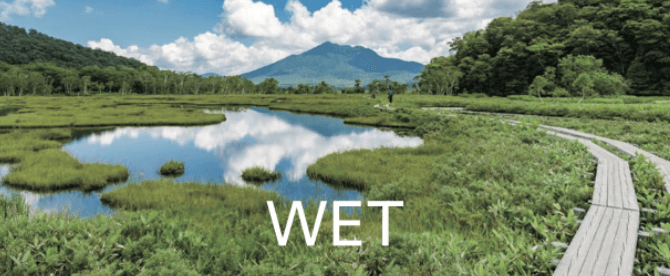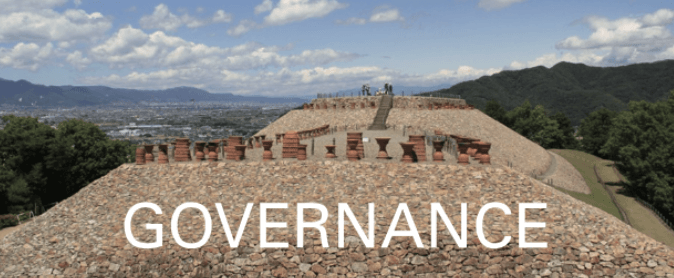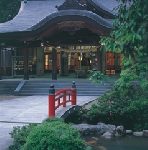
The Echuu Ichinomiya, Echuu Toyama’s most important provincial shrine, in Nanto Toyama, was registered in the Engi-Shiki, the code of Japanese governmental regulation in the 10th century. This shrine has the history of 2000 years, since Onamuchi no kami was enshrined.
Onamuchi no kami, is the god of matchmaking, land development, and agriculture. It is said that this god decided to remain the sprit here after presiding over Hokuriku, the region west of Tokyo on the Japan Sea, and returning to Izumo, Shimane.
This shrine appeared in national history as the highest shrine in Echuu during the Nara period in the 8th century. This shrine’s manor was also an Imperial property.
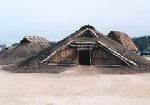
“The Largest Jomon site in Hokuriku, 4,000 years ago” – The scale of this site is 280 meters from east to west and 200 meters from north to south. On this site, there were pit dwelling houses surrounding raised-floor-style houses and open space for festivals. Highly artistic deep pots and unglazed earthenware formed cowrie were excavated. You will learn about the Jomon people’s organizing ability and deep spirit.
The Kitadai Site has the remains of a large settlement that represents the Hokuriku region. This pottery, from the Shinano River basin, has a different form from Kaendoki, earthenware decorated with the design of a flame, even though they were both from middle of the Jomon period (16,000 years ago – 3,000 years ago).

This plaza was a large settlement during the middle of the Jomon period, about 4500 years ago. Four or more sites of raised-floor-style houses were verified in the central part of this 56,000 sq. ft. site. A full-scale building was restored and excavated items were exhibited at Jomonkan. Techniques for knitting cloth, stone tools for tanning fur, and sewing needles, made of bones, were excavated.
Clay figurines have spiral, circles, and triangles patterns. These artifacts show that ingenuity and thought existed during those times.
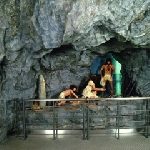
This museum overlooks Toyama Bay to the east. Otomono Yakamochi who compiled Manyoshu, the 8th century anthology of Japanese poetry, overlooked the same view and composed a poetry.
This museum presents an easy-to-understand introduction from Himi of the Jomon period to the modern era, with the Osakai Cave Diorama, ancient burial accessories of tombs, medieval stone towers, wooden Japanese boats, fishing gear, nostalgic tools lined with relocation houses, and Shishimai, Lion Dance Corner.
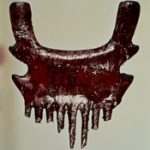
“Here is the origin of Japanese lacquer ware!” -As cool Japan, Japanese lacquer ware is now world renown. This museum’s collection includes one of those original pieces, a 6,100 year old red lacquered comb. This comb was excavated at the Torihama Shell Mound from the early Jomon period. This is symbolic of the highly skilled craft capabilities of the Jomon people.
A dugout (canoe) from about 6,000 years ago was also excavated from the Torihama Shell Mound, where the masterpiece “red lacquered comb” was excavated. These works tell us that the Jomon culture had highly-developed production techniques.

This main shrine building was acclaimed by Taro Okamoto (1911-1996), Japanese Contemporary artist, as “What a savage awesomeness and a force it is”.
In 2000, a huge pillar bundle was excavated, with a slightly attached Bengara, red pigment from the 11th to 13th centuries. This indicates that there was a main shrine building that surpassed the Great Buddha of Todaiji Temple, Nara, in the late Heian period, in the 11th – 12th centuries.
Magatama, the ancient Japanese ornamental stone for sanctuary rituals, in the 4th century, was also excavated. It tells this shrine is a sacred place where prayers had been inherited.
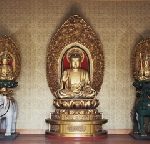
Gakurinji Temple, located in the western suburb of Hita City, was founded in 1342, according to an Imperial scroll written by Emperor Go-Daigo (1288 – 1339), who successfully overthrew the Kamakura shogunate and brought the Imperial House back into power (1333 – 1336). This museum is located on the precincts, and exhibits the Statue of the Buddha triad – Buddha attended by two Bosatsus, by Koyo, a Japanese sculptor of the Kei school and a descendant of five generations of Unkei (1150 – 1223).
This museum also exhibits excavated items from the Fukiage ruins, from the 3rd BC to the 1st century, including rare bracelets excavated around human bones. It is estimated that the Wide Pacific spiral shell bracelet was for adult males, and the cone shell bracelet was for adult females.
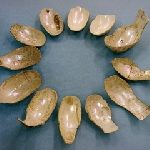
At Kominato Fuwaganeku suites from the 6th to 8th century, many shell products such as turban shell spoons and containers, and decorations of cone shell were excavated. The Turban shell, which were used in the mother-of-pearl work, were well excavated. Turban shell do not live on the mainland of Japan.
In the history books from the 7th century, the name of Amami was written and the treasure of Amami presented to Imperial Court were registered. At the adjacent area of the ruins, stone pots from Nagasaki Prefecture, which seems to have traded Turban shells, were also excavated.
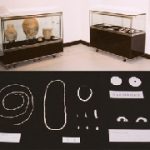
“The Road from the Paleolithic Age to the Space Age ” -Cooking implements made of stones in the Paleolithic Age, more than 30,000 years ago, were excavated at the Yokomine site in Tanegashima Island. This center possesses those relics.
The Ryukyu Arc consists of 199 islands, which are located like flower frames about 1,260km south of Kyushu Island in the Japanese archipelago. There are high islands with forests and flat islands with fresh spring water. Tanegashima is a flat island, which is suitable for carrying and launching space rockets.
In Tanegashima, the Shell Road Road, from ancient days, and the Guns Road, from the early modern age, overlap. Tanegashima developed a dynamic journey both now and in ancient times.
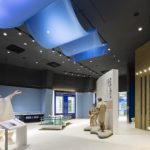
“The Road from the Paleolithic Age to the Space Age ” – Many bracelets made with shells from Okinawa Island, were excavated at the Hirota site, from the later Yayoi period, 1,700 years ago. The Shell Road to Kagoshima in Kyushu Island continues from here.
The Hirota site is a collective grave built on sand dunes that lasted until the Tumulus period (the 3rd– 7th century). There is no other culture in Japan where a large amount of shellfish products were buried in a grave.
This overlaps the Shell Roads of ancient civilizations that have interacted extensively with the Japanese archipelago before the Tumulus period. In ancient times, shellfish was wealth and trade goods. There was technology to produce the goods. Romance is based on technology.
This museum exhibits relics from the Hirota site, and you can also experience making ancient shellfish accessories.
And from this site, you can see modern technology, the Tanegashima Space Center.
